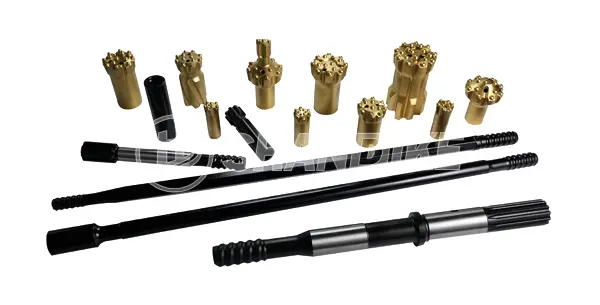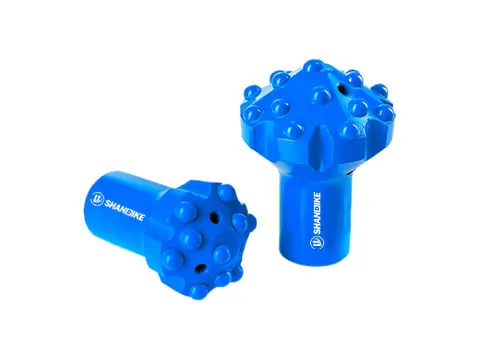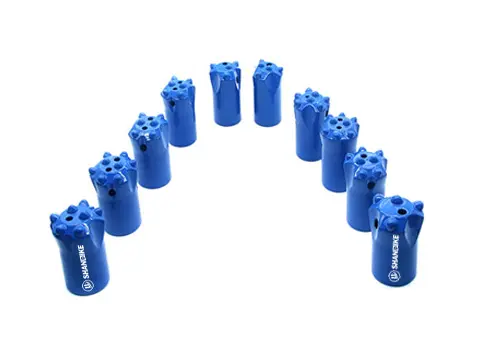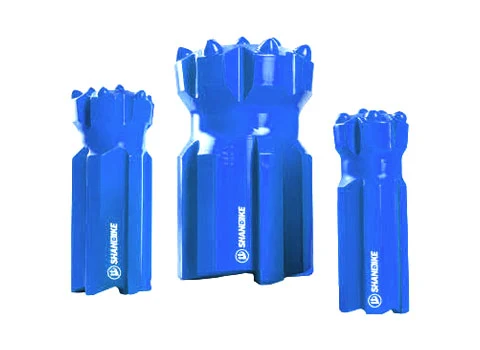T45 extension rods (or extension drill steels) are connecting rods used in rock drilling to extend the reach of a drill string. They are placed between the drill bit and the shank adapter (or between other rods) to allow a rock drill to bore deeper holes than a single drill steel could achieve.

Key Specifications and Features
1. Thread Type (T45): This is the most important identifier.
“T” stands for Tapered Thread. This is a universal, self-centering thread design that ensures a strong, secure connection that can handle high torque and impact forces.
“45” refers to the thread profile and the nominal diameter of the steel bar. A T45 thread is designed for a drill steel with a shank (body) diameter of approximately 45 mm (1.75 inches). The male and female threads are precision-machined to this standard to ensure compatibility across manufacturers.
2. Standard Lengths: Extension rods come in various standard lengths to provide flexibility. Common lengths include:
3 feet (914 mm)
4 feet (1219 mm)
6 feet (1829 mm)
8 feet (2438 mm)
10 feet (3048 mm)
Custom lengths are also available for specific projects.
3. Material and Construction: They are typically forged from high-carbon or alloy steel (like 35SiMnMoV) and undergo heat treatment (hardening and tempering) to achieve an optimal balance of:
High Tensile Strength: To resist stretching and breaking under pull.
High Fatigue Resistance: To withstand the constant cyclic stress of impact drilling.
Good Toughness: To absorb impact without becoming brittle and cracking.
4. Design Features:
Hex or Round Body: Many extension rods have a hexagonal cross-section. This allows them to be gripped easily by a wrench during assembly/disassembly and helps prevent them from spinning in the hole if the thread seizes.
Internal Flushing Hole: A critical feature. Compressed air or water is pumped through this hole to the drill bit to flush out rock cuttings from the borehole, keeping it clean and cool.
How They Work in a Drill String
A typical deep-hole drill string is assembled in this order:
1. Drill Machine -> Shank Adapter (connects to the drill) -> Extension Rod 1 -> Extension Rod 2 -> … -> Drill Bit.
The T45 tapered threads are tightened with a wrench to form a solid, continuous column that transmits both the percussive blow and the rotational torque from the rock drill all the way to the drill bit.
Primary Applications
T45 extension rods are used with handheld sinker drills, jackhammers, and small pneumatic or hydraulic rock drills for a variety of tasks:
Exploration Drilling: Taking core samples for mineral exploration.
Construction Anchoring: Drilling holes for rock bolts, soil nails, and anchor systems.
Quarrying & Mining: For secondary breaking, benching, and small-scale blast hole drilling.
Utility Installation: Drilling for foundation pilings, pole holes, and well drilling.
Demolition: Drilling holes for controlled demolition (plug and feather technique).
Advantages and Disadvantages
| Advantage | Description |
| Strength & Durability | The T45 standard is robust and well-suited for medium-duty drilling applications. |
| Interchangeability | A universal standard, meaning rods and bits from different manufacturers can be mixed (as long as they are T45). |
| Simple Design | Easy to use, maintain, and repair in the field. |
| Effective Flushing | The internal hole allows for efficient removal of cuttings. |


